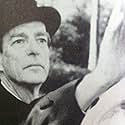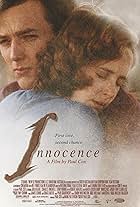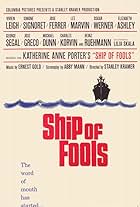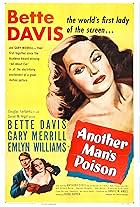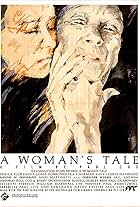An eccentric elderly man tries to enjoy the three things in life that he considers real beauty: collecting art, collecting flowers, and watching pretty women undress.An eccentric elderly man tries to enjoy the three things in life that he considers real beauty: collecting art, collecting flowers, and watching pretty women undress.An eccentric elderly man tries to enjoy the three things in life that he considers real beauty: collecting art, collecting flowers, and watching pretty women undress.
- Awards
- 3 wins & 4 nominations
Sarah L. Walker
- Jane
- (as Sarah Walker)
- Director
- Writers
- All cast & crew
- Production, box office & more at IMDbPro
Storyline
Did you know
- TriviaOne of seven film collaborations of actress Julia Blake and writer-director Paul Cox. They are [in order]: 'Lonely Hearts' (1982), 'Man of Flowers' (1983), 'My First Wife' (1984), 'The Paper Boy' episode of 'Winners' (1985), 'Cactus' (1986), 'Innocence' (2000), and 'Human Touch' (2004). During the 1980s, Blake appeared in a Cox film every year for five straight consecutive years between 1982 and 1986.
- Quotes
Charles Bremer: I'm only half a man.
Lisa: It's the right half.
- ConnectionsFeatured in Reading Australian Film (1988)
Featured review
Warning: detailed review
----- The film, Man of Flowers explores the murky and mysterious Freudian world of psychologically disturbed behaviour - the unconscious mental urges produced by denial of painful past experiences. Director, Paul Cox portrays how those deeply buried torments are so tortuously twisted when reemerging within the conscious mind. In this case, the cause of the sinister deviance being the originally repressed, oedipal sexual infatuation of a young boy (Charles Bremner) for his mother. Now matured into adulthood, the consequences of the boy's unresolved mental morass are both delightful and deadly. The stifled erotic obsession not only mentally metamorphoses into a richly cultured and critical appreciation of the arts, but also poses a dire threat to the perceived psychological father figure, who, threateningly, represents a modern-day rival for the mother's sexuality.
----- Confused already? Coherently translating such complex human mental meanderings to the cinematic screen is no simple task. Paul Cox not only thrives on the challenge, but, in Man of Flowers, admirably succeeds in immersing us in the pathos of his tormented heroes.
-----The principal character, Charles Bremner, is a wealthy, eccentric, gentle man who loves, or rather, is obsessed with the harmony of form and colour - the aesthetics of visual art. He admires skilled creativity, often stopping and physically caressing the sculpted, sensuous form of artworks on his many long walks throughout the city parks. He particularly adores the delicate, natural beauty of flowers and is a frequent customer at the local florists where he orders exotic arrangements for his finely decorated home, complementing the many examples of his discerning taste. He is a scholarly man. A would be artist himself.
A connoisseur of style and cultural excellence.
----- However, it is apparent that Charles has a hidden problem - a behavioural disorder. He visits his psychologist for help and we slowly realise that Charles is sexually impotent, unable to become naturally aroused unless stimulated by the aesthetics of form and beauty. When we see Charles sensuously stroking various objects d'art, we realise that he is mentally masturbating - pleasuring himself
-----The brilliantly effective series of flashback photographic sequences, shot in nonprofessional, hand-held, 16 mm format, offers the audience an historical perspective on Charles' dilemma and an explanation for his strange behaviour. Through the soundless, sepia toned, home-movie styled shots, we glimpse Charles, as a young boy, sexually infatuated with his mother (arguably, the result of an earlier unresolved Freudian, `Oedipal Complex' - the boy, as an infant, being sexually attracted to his mother, and viewing the father as a threat to this psycho sexual relationship). The ethereal quality of the photography gives the scenes a symbolic dreamlike connotation. This further emphasises the Freudian repressed psychological connection, as we witness Charles making overt sexual advances to his mother (and antoher woman). The advances are sadistically reprimanded by his father, who humiliatingly hauls the boy away from the scene by his ear, indicating the likelihood of some forthcoming harsh punishment - perhaps a sound thrashing - thereby repressing the whole disastrous episode deeply within the boy's unconscious mind.
----- Lisa is a likable, highly attractive, sensual, long-suffering woman; seemingly trapped in an abusive relationship with a misogynistic, starving artist, whose frustration over his questionable talents and lack of recognition is exacerbated by a heavy cocaine habit. Lisa increasingly resents her sorry predicament, but continues to financially support her boyfriend's artistic aspirations and drug dependent lifestyle. In order to supplement her income she moonlights as an artist's model.
Charles, as a would-be artist, is drawn to her sensuous beauty, and hires Lisa to pose at his home each week.
------ In Charles' splendid salon, the visually rich mise en scene shots, accompanied by the exotic operatic tones of Lucia di Lammermoor, feature a frame-centred Lisa slowly and erotically removing her clothing piece by piece, displaying the sheer physical beauty of her body. Meanwhile an enraptured but tense Charles sits unobtrusively (almost off screen) voyeuristically watching her performance. The actors are surrounded by a jungle of exquisite flower arrangements, exotic furniture and Charles' splendid collection of paintings and various artistic creations. The scene exemplifies beauty as his erotic fetish and informs us that Charles desperately needs the stimulation of beauty to function sexually.
----- Although perplexed, Lisa becomes rather fond of this strange, cultured man. She feels a compassion for his loneliness. Perhaps, she even senses his sexual dilemma as she finally stands naked in front of a now tense Charles to tentatively enquire: `Do you want anything else?' Charles, tongue-tied, and befuddled, mumbles an anguished `no', and staggers out of the house to a church across the street where he wildly plays the organ to an orgasmic crescendo. The irony of the sexually charged mise en scene is demonstrated by the sombre, sanctified surroundings of the church and the stoic minister approaching Charles, congratulating him on being such a good man who is much appreciated by the local congregation, contrasted with the climatic eruption of organ music as Charles finally metaphorically releases his frenzied passions.
----- Using surrealistic characters, Cox continues the theme of psychological personality extremes throughout the movie: the philosopher postman who exchanges long intellectual dialogues with Charles as he delivers the letters that Charles has written to his dead mother and then mailed to himself. The dominatrix like instructor in Charles drawing class reveals her lack of artistic sensitivity, barking military style orders to her students. The morbid, clinically depressed psychologist attempting to help Charles resolve his own problems. These larger than life characters further enrich the mentally murky mood that permeates the film.
----- Man of Flowers is intended be viewed as a psychologically erotic drama exploring one man's kink, his unconscious repressed sexual urgings and how they are represented in his conscious world. As such, the movie is laced with sexual imagery: the beautiful Lisa sensuously stripping off her clothes to the surging operatic tones of Lucia di Lammermoor; a Woody Allen like, pathetic Charles standing, full-frontal nude and limply impotent, unarroused by the sexually playful female swimmers. The gratuitous lesbian scene, involving Lisa and her friend was designed by Lisa to stimulate Charles, but it fell very flat, and went nowhere. The result is a missed opportunity to excite the viewer with a valid supporting shot of sensual imagery as further evidence of Charles fetish for erotic beauty. perhaps Charles' aestheticisation of sex is so complete that no amount of sexual provocation can ever stimulate him.
-----The complex mental maze often stretches the audience's comprehension. Much like the mentally disturbed themselves, we are unsure just what the real motives are. Just what is Charles doing and why he is doing it? We are aware that his compulsion is sexual gratification through beauty. Much is left to our own interpretation and when the film ends we are perhaps as confused as Charles is. What was the implication of Charles returning those club like objects to their rack in his garden - were they the murder weapons? Did then, Charles kill Lisa's abusive boyfriend in order to protect her - his `little flower' - and claim her precious beauty all for himself? Or, in fact, did Charles actually kill Lisa herself, in order to permanently preserve her exquisite physical form. And the final bizarre touch, did Charles then `bronze' either Lisa's or her boyfriend's body and mount the statue in the park in order that he may perpetually admire the beauty he so longingly coveted? We are really not sure what actually finally happened.
------ Despite these shortfalls, Paul Cox succeeds in his intention of creating empathy for our mentally tormented hero. Charles Bremner may be an odd, impotent, murderous, voyeuristic, sexual deviant; but, despite all the negative characteristics, he is an essentially decent and well intended human being. Furthermore, he represents a certain elegant, albeit wacky, sophistication and refinement - rare qualities in today's crude and vulgar society.
----- The film, Man of Flowers explores the murky and mysterious Freudian world of psychologically disturbed behaviour - the unconscious mental urges produced by denial of painful past experiences. Director, Paul Cox portrays how those deeply buried torments are so tortuously twisted when reemerging within the conscious mind. In this case, the cause of the sinister deviance being the originally repressed, oedipal sexual infatuation of a young boy (Charles Bremner) for his mother. Now matured into adulthood, the consequences of the boy's unresolved mental morass are both delightful and deadly. The stifled erotic obsession not only mentally metamorphoses into a richly cultured and critical appreciation of the arts, but also poses a dire threat to the perceived psychological father figure, who, threateningly, represents a modern-day rival for the mother's sexuality.
----- Confused already? Coherently translating such complex human mental meanderings to the cinematic screen is no simple task. Paul Cox not only thrives on the challenge, but, in Man of Flowers, admirably succeeds in immersing us in the pathos of his tormented heroes.
-----The principal character, Charles Bremner, is a wealthy, eccentric, gentle man who loves, or rather, is obsessed with the harmony of form and colour - the aesthetics of visual art. He admires skilled creativity, often stopping and physically caressing the sculpted, sensuous form of artworks on his many long walks throughout the city parks. He particularly adores the delicate, natural beauty of flowers and is a frequent customer at the local florists where he orders exotic arrangements for his finely decorated home, complementing the many examples of his discerning taste. He is a scholarly man. A would be artist himself.
A connoisseur of style and cultural excellence.
----- However, it is apparent that Charles has a hidden problem - a behavioural disorder. He visits his psychologist for help and we slowly realise that Charles is sexually impotent, unable to become naturally aroused unless stimulated by the aesthetics of form and beauty. When we see Charles sensuously stroking various objects d'art, we realise that he is mentally masturbating - pleasuring himself
-----The brilliantly effective series of flashback photographic sequences, shot in nonprofessional, hand-held, 16 mm format, offers the audience an historical perspective on Charles' dilemma and an explanation for his strange behaviour. Through the soundless, sepia toned, home-movie styled shots, we glimpse Charles, as a young boy, sexually infatuated with his mother (arguably, the result of an earlier unresolved Freudian, `Oedipal Complex' - the boy, as an infant, being sexually attracted to his mother, and viewing the father as a threat to this psycho sexual relationship). The ethereal quality of the photography gives the scenes a symbolic dreamlike connotation. This further emphasises the Freudian repressed psychological connection, as we witness Charles making overt sexual advances to his mother (and antoher woman). The advances are sadistically reprimanded by his father, who humiliatingly hauls the boy away from the scene by his ear, indicating the likelihood of some forthcoming harsh punishment - perhaps a sound thrashing - thereby repressing the whole disastrous episode deeply within the boy's unconscious mind.
----- Lisa is a likable, highly attractive, sensual, long-suffering woman; seemingly trapped in an abusive relationship with a misogynistic, starving artist, whose frustration over his questionable talents and lack of recognition is exacerbated by a heavy cocaine habit. Lisa increasingly resents her sorry predicament, but continues to financially support her boyfriend's artistic aspirations and drug dependent lifestyle. In order to supplement her income she moonlights as an artist's model.
Charles, as a would-be artist, is drawn to her sensuous beauty, and hires Lisa to pose at his home each week.
------ In Charles' splendid salon, the visually rich mise en scene shots, accompanied by the exotic operatic tones of Lucia di Lammermoor, feature a frame-centred Lisa slowly and erotically removing her clothing piece by piece, displaying the sheer physical beauty of her body. Meanwhile an enraptured but tense Charles sits unobtrusively (almost off screen) voyeuristically watching her performance. The actors are surrounded by a jungle of exquisite flower arrangements, exotic furniture and Charles' splendid collection of paintings and various artistic creations. The scene exemplifies beauty as his erotic fetish and informs us that Charles desperately needs the stimulation of beauty to function sexually.
----- Although perplexed, Lisa becomes rather fond of this strange, cultured man. She feels a compassion for his loneliness. Perhaps, she even senses his sexual dilemma as she finally stands naked in front of a now tense Charles to tentatively enquire: `Do you want anything else?' Charles, tongue-tied, and befuddled, mumbles an anguished `no', and staggers out of the house to a church across the street where he wildly plays the organ to an orgasmic crescendo. The irony of the sexually charged mise en scene is demonstrated by the sombre, sanctified surroundings of the church and the stoic minister approaching Charles, congratulating him on being such a good man who is much appreciated by the local congregation, contrasted with the climatic eruption of organ music as Charles finally metaphorically releases his frenzied passions.
----- Using surrealistic characters, Cox continues the theme of psychological personality extremes throughout the movie: the philosopher postman who exchanges long intellectual dialogues with Charles as he delivers the letters that Charles has written to his dead mother and then mailed to himself. The dominatrix like instructor in Charles drawing class reveals her lack of artistic sensitivity, barking military style orders to her students. The morbid, clinically depressed psychologist attempting to help Charles resolve his own problems. These larger than life characters further enrich the mentally murky mood that permeates the film.
----- Man of Flowers is intended be viewed as a psychologically erotic drama exploring one man's kink, his unconscious repressed sexual urgings and how they are represented in his conscious world. As such, the movie is laced with sexual imagery: the beautiful Lisa sensuously stripping off her clothes to the surging operatic tones of Lucia di Lammermoor; a Woody Allen like, pathetic Charles standing, full-frontal nude and limply impotent, unarroused by the sexually playful female swimmers. The gratuitous lesbian scene, involving Lisa and her friend was designed by Lisa to stimulate Charles, but it fell very flat, and went nowhere. The result is a missed opportunity to excite the viewer with a valid supporting shot of sensual imagery as further evidence of Charles fetish for erotic beauty. perhaps Charles' aestheticisation of sex is so complete that no amount of sexual provocation can ever stimulate him.
-----The complex mental maze often stretches the audience's comprehension. Much like the mentally disturbed themselves, we are unsure just what the real motives are. Just what is Charles doing and why he is doing it? We are aware that his compulsion is sexual gratification through beauty. Much is left to our own interpretation and when the film ends we are perhaps as confused as Charles is. What was the implication of Charles returning those club like objects to their rack in his garden - were they the murder weapons? Did then, Charles kill Lisa's abusive boyfriend in order to protect her - his `little flower' - and claim her precious beauty all for himself? Or, in fact, did Charles actually kill Lisa herself, in order to permanently preserve her exquisite physical form. And the final bizarre touch, did Charles then `bronze' either Lisa's or her boyfriend's body and mount the statue in the park in order that he may perpetually admire the beauty he so longingly coveted? We are really not sure what actually finally happened.
------ Despite these shortfalls, Paul Cox succeeds in his intention of creating empathy for our mentally tormented hero. Charles Bremner may be an odd, impotent, murderous, voyeuristic, sexual deviant; but, despite all the negative characteristics, he is an essentially decent and well intended human being. Furthermore, he represents a certain elegant, albeit wacky, sophistication and refinement - rare qualities in today's crude and vulgar society.
Details
- Release date
- Country of origin
- Language
- Also known as
- Der Mann, der die Blumen liebte
- Filming locations
- Production company
- See more company credits at IMDbPro
Box office
- Gross worldwide
- $273
Contribute to this page
Suggest an edit or add missing content



